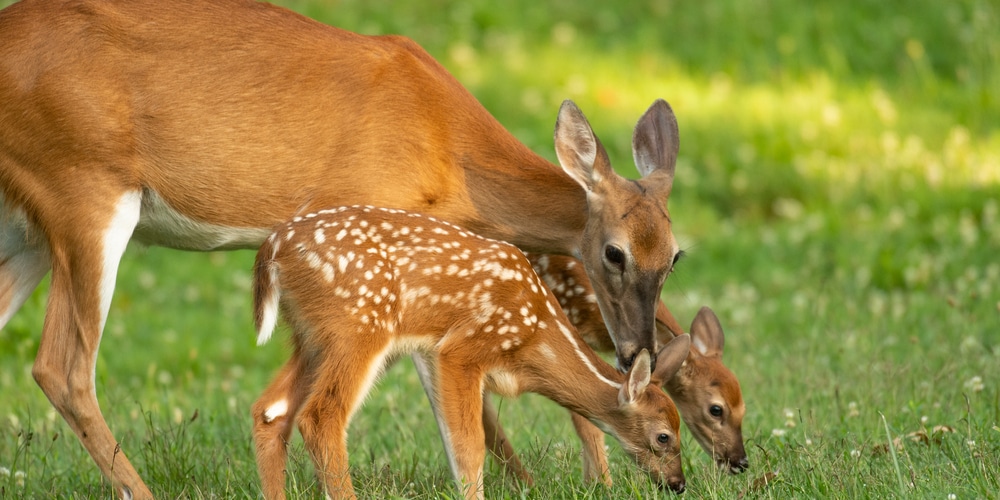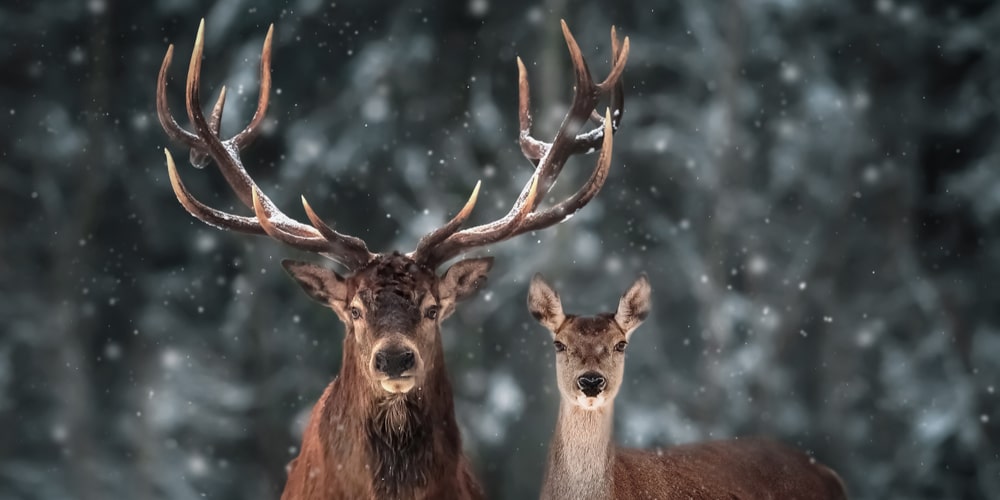If you’re looking for the best grass to plant for deer, there are a few specific varieties to consider. Deer’s like long grass that they can hide in, as well as shorter grass to eat. Aim to plant native grasses that deer would find in the wild.
Deers feed on average five times a day and require two different types of grass. Shorter grass to eat and longer grass that provides the coverage they need to sleep. Switchgrass can be planted as it’s tall and provides protection. Some people also grow big blue, but this grass offers a better environment for birds such as pheasants. Let’s look at the best varieties to plant if you’re aiming to create a native habit for deer and other wildlife.

Which Types of Grass is Best For Deer?
Switchgrass is the best type of grass for deers as it’s long and provides enough cover. This variety of grass is relatively robust. The only problem with planting switchgrass to attract deer is that they won’t eat this variety of grass. While deers may visit your paddock to sleep, you may not see any deer during the day.
The solution to this problem is to plant pockets of edible grass in amongst the switchgrass. Choose a good quality grass seed, such as ryegrass, and create irregularly shaped pockets. Ryegrass is a good choice as it germinates quickly and is easy to grow. Ensure that the ryegrass is completely surrounded by taller switchgrass.
You can use a herbicide during the summer to get rid of broadleaf weeds from your patches of ryegrass. Also, remove briars and woody weeds, shrubs, and small trees. This will help create enough food for deer, which will mean they are more likely to be attracted to your field.
By creating pockets of different grasses, deer will have enough food as well as somewhere covered to dose. You may also like to plant trees near the pockets of shorter grass to mark where the deer are likely to be during the day and provide extra cover.
It will take about 18 months for switchgrass to reach the desired height of between 4 and 5 feet. In some regions, with the right climate, switchgrass may grow slightly faster, and your deer habitat will be established in a single season.
Conclusion
When creating a deer habitat, aim to provide the deer with food and protection. If you can do that, the deer are more likely to hang around in your field rather than going elsewhere to meet their needs. Switchgrass is the best type of long grass that provides cover for deer. Incorporate pockets of shorter fodder grass in amongst the switchgrass. Ryegrass is a good choice as it’s very fast growing and is hardy. It’s best to use a herbicide to kill weeds so that the deer have enough grass to feed on. You may also like to plant trees and provide a water source to make your habitat more appealing to deers.
